By Kim McDarison
Monitoring efforts remain in place at the site of a 2019 chemical leak emanating from an Enbridge Energy pipeline on Blackhawk Island Road.
A letter sent to Enbridge Energy from Wisconsin Department of Natural Resources (DNR) hydrogeologist Caroline Rice on Wednesday, March 31, noted that the department’s review of an Interim Action and Site Investigation Report (SIR) submitted by Enbridge in January brought the following comments: “The results of the investigation indicate that most shallow impacted soils have been removed and the groundwater plume appears to be limited to within approximately 250 feet of the point of release.”
The SIR defined shallow soil as less than 10 feet and the groundwater plume as the area within the aquifer where contaminated concentrations are above the “enforcement standard.”
While the “release” or leak of a chemical solvent called “diluent,” which means “thinning agent,” occurred in April 2019, information about the incident was not shared with property owners in and around the area until February and March of this year.
In February, according to Jefferson County Office of Emergency Management Director Donna Haugom, a spill report noting a spill of 1.35 gallons of a substance classified as “unknown” was shared with members of the Jefferson County Board of Supervisors’ Local Emergency Planning Committee (LEPC).
On Friday, March 26, the Jefferson County Board of Supervisors’ Law Enforcement and Emergency Management Committee received an update from several representatives from Enbridge Energy about a valve failure within the company’s “Line 13,” which passes through a rural portion of Jefferson County near the intersection of Blackhawk Island Road and Westphal Lane.
For many committee members and Fort Atkinson and Town of Koshkonong residents, it marked the first time they had learned about the spill, the size of the affected area, its environmental impacts, and remediation and cleanup efforts that had been under way since last year.
Residents attending the meeting, both in person and virtually, voiced concern over the amount of time it took for the public to become aware of the leak.
Representatives from Enbridge, including Dave Schwartz, a technical supervisor, and Jon Eisele, a senior public awareness coordinator, answered questions and offered contact information for residents who were concerned about the spill’s environmental impacts. They also provided information for landowners who might want their well water tested.
What happened in 2019?
In her letter to Enbridge, Rice offered some background involving the spill and subsequent reporting procedures.
On April 26, 2019, she wrote, a “whistle alarm” was reported to “Enbridge Environment,” after which AECOM, an environmental consulting firm, was contacted to “provide environmental support at the site.”
Enbridge Line 13 Blackhawk Valve, which is how the site is referenced, is located on a 68-acre parcel. Four pipelines, Nos. 6,14,13 and 61 are present at the site, Rice wrote.
The leak on the property was attributed to a failure of a fitting on a control valve associated with Line 13.
The line, a company map shows, runs between Illinois and Canada.
After the leak was reported, Rice stated, a screening process began that included the sampling of shallow soils and the installation of temporary vapor-monitoring points.
Three soil excavations were performed at the site and samples were collected.
“Analytical results indicate that soil contamination remains beneath the release (leak) and, although limited, also in the sidewalls of the final excavation,” Rice wrote.
What happened in 2020?
In July of 2020, according to the SIR, the release of the diluent was reported to the DNR.
Additional investigation work was conducted at the site between August and October of 2020, Rice noted in her letter. At that time, 27 soil borings were created, along with 27 temporary monitoring wells. Eight permanent monitoring wells were also installed, and the “nearest potable well was sampled.”
What’s happening in 2021?
With the release of the SIR in January, Its cover letter stated, objectives for Line 13 at the Blackhawk Island Road site, were to “provide a summary of the leak discovery, immediate and interim actions, and the ensuing site investigation that occurred at the site in 2019-2020.”
Enbridge further asked for technical assistance from the DNR for site remediation.
Within the SIR, Enbridge offered a chronology of dates, summarizing events relating to the spill.
In April, 2019, the SIR states, Enbridge became aware of the spill and AECOM was contacted to provide environmental support.
In May, 2019, temporary vapor monitoring probes, four soil gas samples and a shallow surface soil sample, were collected, and impacted soils were removed, and excavation samples were collected for laboratory analysis. Additionally, Enbridge employees took measures to temporarily repair the leaking valve fitting.
In June, 2019, the leaking valve components were permanently repaired.
July through August, and again in October, 2019, more soil samples were collected for laboratory analysis.
In July of 2020, a boring was advanced near the leak site and soil and groundwater samples were submitted for laboratory testing.
In August, 2020, having reported the incident to DNR in July, Enbridge received a “responsible party” letter from the DNR, and requested AECOM to conduct a site investigation.
Between August and September, 2020, soil borings and monitoring wells were installed at the site as part of the investigation and samples were collected and monitoring continued.
In October, 2020, a sample was taken from a drinking water well at the Macleod residence, and more groundwater samples were collected.
In November of 2020, calculations by AECOM estimated that between 29 and 33 barrels of diluent had been released.
Ongoing sampling
In her letter to Enbridge, Rice defined the work conducted, as outlined in the SIR, as “a reasonable start at defining site hydrogeologic conditions and identifying the nature and extent of impacts associated with the release.”
Still, she wrote, the “lateral and vertical extent of impacts to soil requires better definition.”
An evaluation of contaminant movement along preferred pathways, defined as pipeline and associated backfill, has not been performed, Rice stated.
An evaluation of the vertical movement of the groundwater plume had not yet been completed, she continued.
Additional work that is being required by the DNR includes:
• Additional soil investigation, which, Rice wrote, is needed to more accurately define the nature and extent of remaining soil contamination.
• Additional groundwater investigation, which is needed to evaluate vertical flow and the potential for downward migration of the contaminant plume.
• Contaminant migration evaluation, which will focus on a potential for underground onsite infrastructure, specifically, the migration along the outside of the pipelines and associated backfill.
• Private well sampling that the DNR will request for private wells within 1,200 feet to the south of the release.
• Vapor risk assessment, which the DNR will request for onsite buildings.
All of the above samples will be tested for volatile organic compounds (VOCs), according to the letter.
Informing the public
In a telephone interview, Haugom told Fort Atkinson Online that she received a spill report from the DNR in August of 2020. It included the following information:
On May 17, 2019, a spill of a substance classified on the report as “unknown” of approximately 1.35 gallons, occurred.
The report cited the location of the spill as South Central Region, Jefferson County, City of Fort Atkinson, with an incident location identified as N1850 Blackhawk Island Road.
Enbridge Energy was listed as the “responsible party” and the cause was listed as “equipment failure.”
A short narrative within the report stated that the release was of 1.35 gallons of diluent.
“Repairs were made last year, but groundwater monitoring will have to be done and that will exceed the $50,000 threshold,” the spill report stated.
Steve Martin, South Central Region team supervisor for the DNR’s Remediation and Redevelopment Program, responding to questions by phone, noted that the monetary threshold is a part of the process at the federal level.
At the state level, he said, the DNR is currently evaluating criteria in place for the release of hazardous substances.
Relative to the Enbridge reporting chronology, he said, “We are in the process of identifying a response to their untimely notification. We are planning to ask some followup questions and there may be some other activities to determine a course of action.”
Thus far, the DNR has required processing fees as determined by state code, to help offset the cost of receiving and reviewing documents, he said.
When asked about site cleanup costs, he said: “I anticipate that Enbridge will cover those costs entirely.”
Under the heading of “cleanup,” the spill report indicated that “contaminated soil was removed and water monitoring will be conducted.”
In a Feb. 19 correspondence sent to Haugum from Dave Stafford, listed on the DNR staff directory as an Enbridge Pipeline Agency spokesperson, a monitoring plan was outlined to include quarterly (January, April, July and October) dates at which time eight monitoring wells will be tested to monitor the groundwater.
Samples, according to the correspondence, from each well will be submitted to an accredited laboratory for analysis of volatile organic compounds. Compounds will include benzene, toluene, ethylbenzene and xylene, which, the report noted “are the most prevalent compounds in the diluent/condensate product.”
The process, the spill report continued, “is all dictated by the Wisconsin Department of Natural Resources … rules for investigations at remediation sites. This monitoring activity will continue until we receive site closure from the WDNR.”
Spill reports are routinely shared at the county’s Local Emergency Planning Committee (LEPC) meetings, Haugom said, and the Enbridge spill report was shared at that body’s February 2021 meeting.
Haugom said that after COVID-19 precautions were put in place last March, the LEPC stopped meeting. February marked the first opportunity to share the report with that committee, she said.
March 26 Law Enforcement and Emergency Management Committee meeting
Jefferson County Supervisor District 13 Anita Martin said she attended the Feb. 17 LEPC meeting and learned about the 2019 spill.
“I am interested in environmental issues and there is a pipeline (near) my district, in the Town of Lake Mills,” she said.
Martin’s district includes the City of Lake Mills.
At the meeting, it was noted on the DNR spill report that the amount of materials spilled was 1.35 gallons, Martin said, adding that she thought the number was “odd.”
She asked for more information, and later learned that the amount of material spilled was much larger, at around 1,200 gallons.
She also was concerned that nearly 15 months had elapsed between the time of the spill and the time that it was reported by Enbridge to the DNR.
“It’s a self-reporting system,” she said. “Fourteen or 15 months passed before they basically reported it. I can’t speak to how or why that happened, but it is a concern. What I want to know is why it took so long?”
Since the remediation process began, Martin said, some 130 tons of contaminated soil has been removed from the site.
“The site is now considered a brownfield site, she said, adding that a radius of 1,200 feet from the point of the spill has been identified as an area of potential impact.
At the March meeting, some 10 wells and 18 properties were identified within the radius, she said, adding: “So far, only one person has had their well tested, and that was the resident who was closest to the spill.”
“As far as the county is concerned, we don’t have any kind of governing purview over this issue in the sense of Enbridge somehow being obligated to us,” Jefferson County District 7 Supervisor and Law Enforcement and Emergency Management Committee Chairperson Dwayne Morris said.
“If Enbridge owned a truck and it spilled gas, it would fall under our purview. But this is under the federal government’s purview and that is an important distinction. To our knowledge, the DNR is the governing body with oversight,” he said.
“We are obviously concerned for the well-being of our residents, so we will represent them, which I feel like we’ve been doing with having Enbridge come and explain what has happened to us,” he continued.
“As far as we are concerned, the ball is in DNR and Enbridge’s court in solving this problem and we will act as an advocate on the residents’ behalf as we need to. If they call Enbridge, then they can handle it. If we get calls, we will be responsive,” he said, adding that he would likely place the issue on an upcoming Enforcement and Emergency Management Committee agenda.
Looking at the time lapse, he said he believed the COVID-19 pandemic might have affected the company’s ability to react and share information.
“They started to investigate and then the winter happened and COVID, and once they had a good idea of how big it was, it was September of 2020. And that’s when they filed the report with the U.S. Department of Transportation Pipeline and Hazardous Materials Safety Administration,” he said.
“The real question is: Is the DNR required by state law to inform local governments of an issue like this?” he asked.
“If not, then it is not a bad ideas to take that to the state Legislature to say that it would be a wise idea.”
Morris continued: “I’ll just say that what I have seen dealing with Enbridge, and that’s been as long as I’ve been a supervisor, they have been very neighborly … and that is not true of other companies in the county that work with hazardous materials.
“We could also ask: What is the safest way to transport this product?” he said, adding that compared to rail and truck transportation options, pipelines might be the safest means of conveyance.
Morris shared information given by Enbridge at the meeting, including contact information for David Schultz, including his email at david.schultz@enbridge.com and telephone number of (608) 756-3167.
In a recent telephone interview Enbridge Communication Specialist Juli Kellner said that the company has a telephone line dedicated to helping landowners with their concerns. Landowners can call: 1-855-869-8261.
“That information was given to residents who attended the meeting,” he said, adding that about seven residents, five of whom were from within the county, attended.
Jefferson County Supervisor District 30 Walt Christensen represents three wards in the Town of Koshkonong and one ward in the Town of Sumner. He also is a supervisor on the Town of Koshkonong board.
“About a month ago, I got a call about a February meeting and that was the first I’d learned of it,” he said of the spill.
“Diluent is the product in the pipeline that spilled. Tar sands oil is thick, so they dilute it with this stuff. It is a cocktail of these solvents that is shipped with the oil to the refinery and then it is separated from the oil and the diluent is returned to Canada, and that’s what leaked.”
When chemicals leak, Christensen said, they tend to move underground.
“It is not always possible to know where they are and to identify them once they are in the ground,” he said.
“This was originally detected by one of their (Enbridge) workers who smelled it. They were not alerted by a sensor. They were there for another reason and somebody could smell it,” he added.
While he was concerned for his constituents, he said, oversight is a matter of federal regulation.
“The federal government controls pipelines, and in second place is the Wisconsin DNR,” Christensen said. “Really, nowhere in there is the local government with any kind of say, and we don’t get any revenue from these pipelines from the state. Nonetheless, we do have some emergency management responsibilities so there is some cost.
“When it comes to these pipelines, we are a partner, like it or not,” he said. “They put the pipeline in there years ago; they age, and we don’t have a say and we are affected by it, and I would like to have more response from the elected people at the federal level.”
Christensen said constituents should express their concerns to federal legislators, in this case, 5th District U.S. Rep. Scott Fitzgerald.
“He is the closest to the FERC (Federal Energy Regulatory Commission) and the federal regulatory enterprises involved with this,” the supervisor noted.
“Regulation, it comes at a higher level, but it affects people here,” he said.
“My understanding is it was contained about a couple-hundred feet from the site and the materials were removed and disposed of properly,” he added.
To learn more
Those interested in contacting state and federal officials can do so through the following websites:
U.S. Sen. Ron Johnson: https://www.ronjohnson.senate.gov.
U.S. Sen. Tammy Baldwin: https://www.baldwin.senate.gov.
U.S. Rep. Scott Fitzgerald: https://fitzgerald.house.gov.
State Rep. Cody Horlacher (Fort Atkinson): https://legis.wisconsin.gov/assembly/33/horlacher.
State Sen. Steve Nass (Fort Atkinson): https://legis.wisconsin.gov/senate/11/nass/biography/.
State Rep. Don Vruwink (Town of Koshkonong): https://docs.legis.wisconsin.gov/2021/legislators/assembly/2212.
State Sen. Janis Ringhand (Town of Koshkonong): https://legis.wisconsin.gov/senate/15/ringhand/.
Those interested in reading the full SIR can find it here: https://dnr.wi.gov/botw/DownloadBlobFile.do?docSeqNo=188513&docName=20210129_37_SIR.pdf.
Those interested in learning more about agenda items on upcoming meetings of the Jefferson County Board of Supervisors and its committees may visit the website: https://www.jeffersoncountywi.gov/index.php.
Those interested in learning more about Enbridge and its products may visit the company’s website: https://www.enbridge.com.
This story has been updated: Anita Martin is a county supervisor representing District 13, which includes the City of Lake Mills.
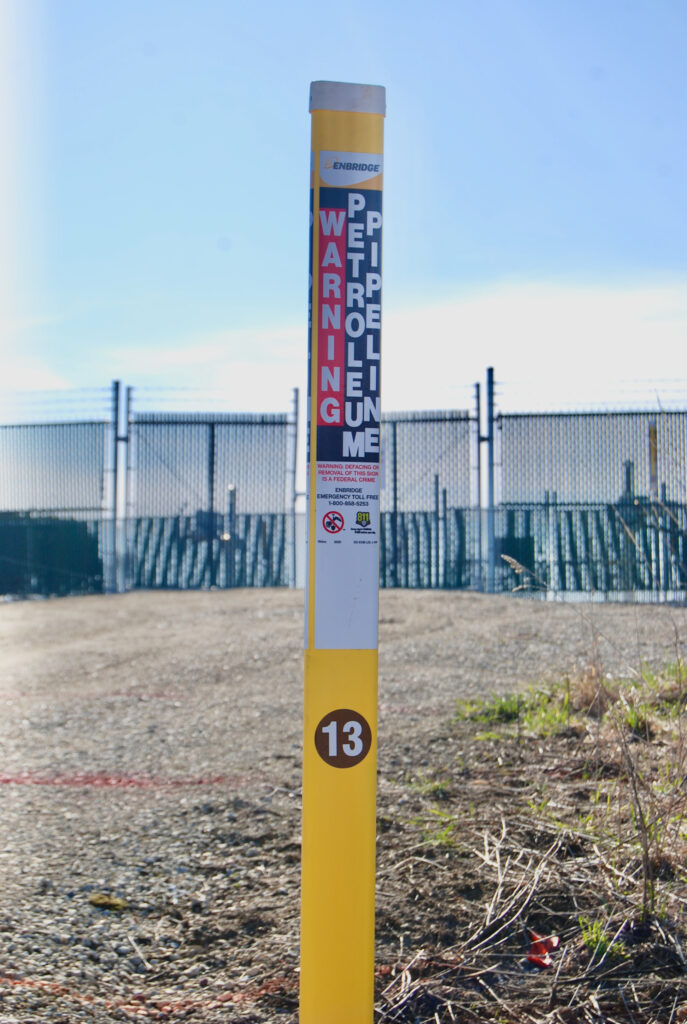
A marker, as viewed from Blackhawk Island Road outside of the Fort Atkinson city limits, indicates the location of Line 13. The leak associated with the line was attributed to a fitting on a valve located within the fenced area shown behind the marker.
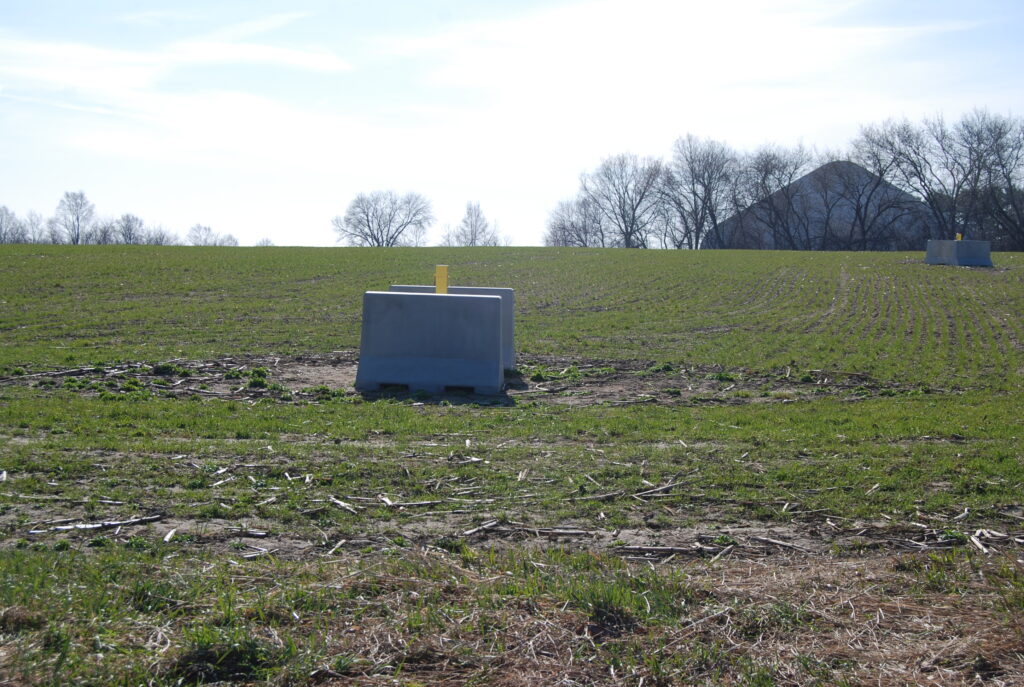
A monitoring well on the Enbridge pipeline Blackhawk Island Road site as viewed from Blackhawk Island road.
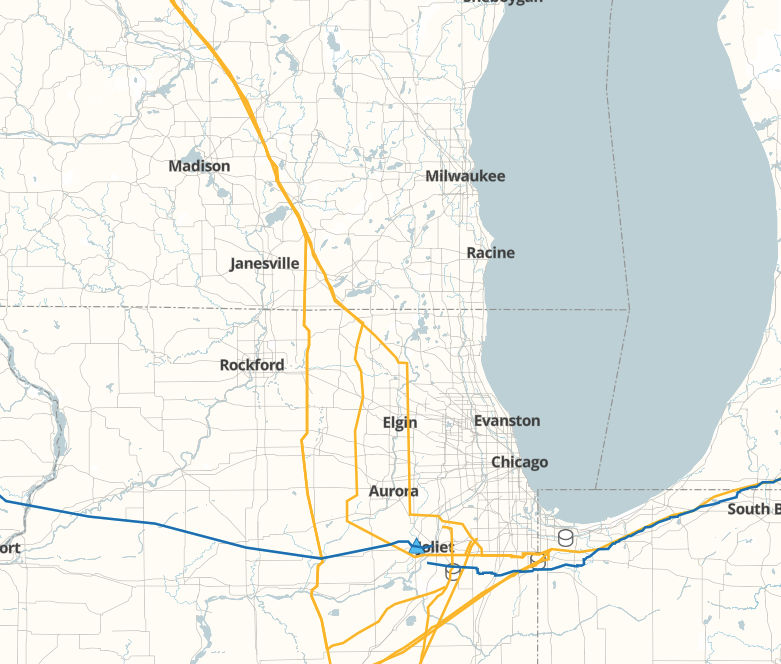
A map shows Enbridge pipelines that run between Illinois and Canada.
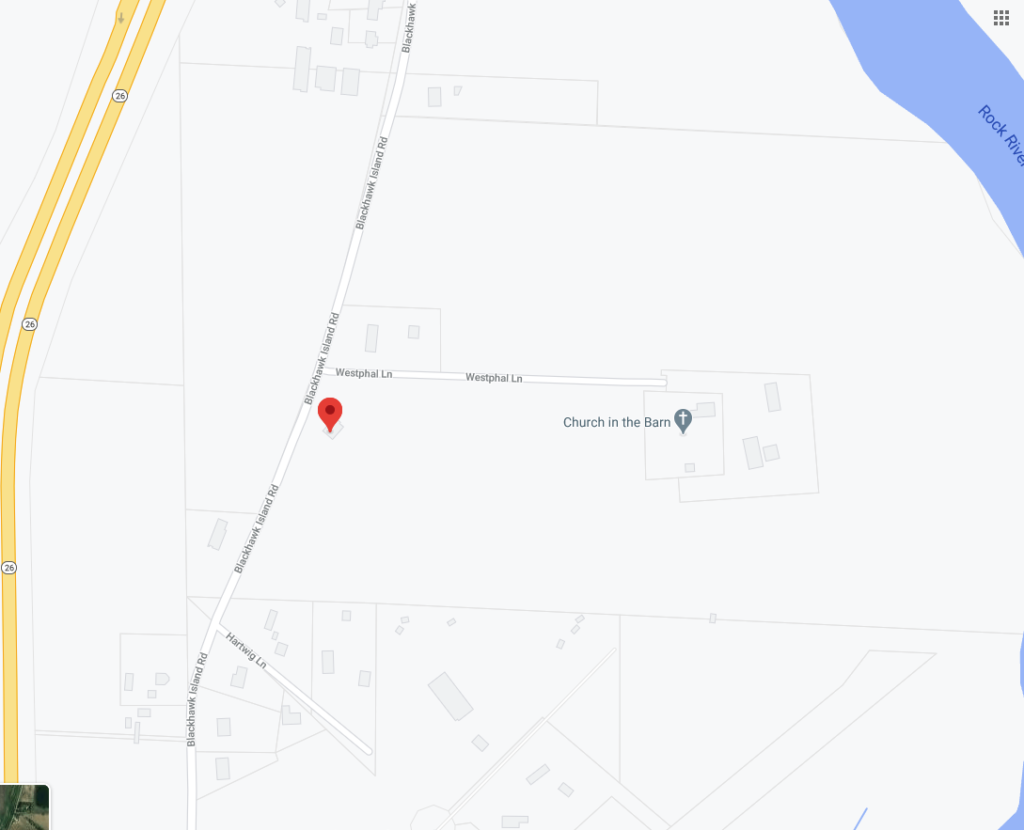
A map shows the location of the nearly 70-acre property through which four Enbridge pipelines run, Line 13 among them. The property is situated at the corner of Blackhawk Island Road and Westphal Lane.
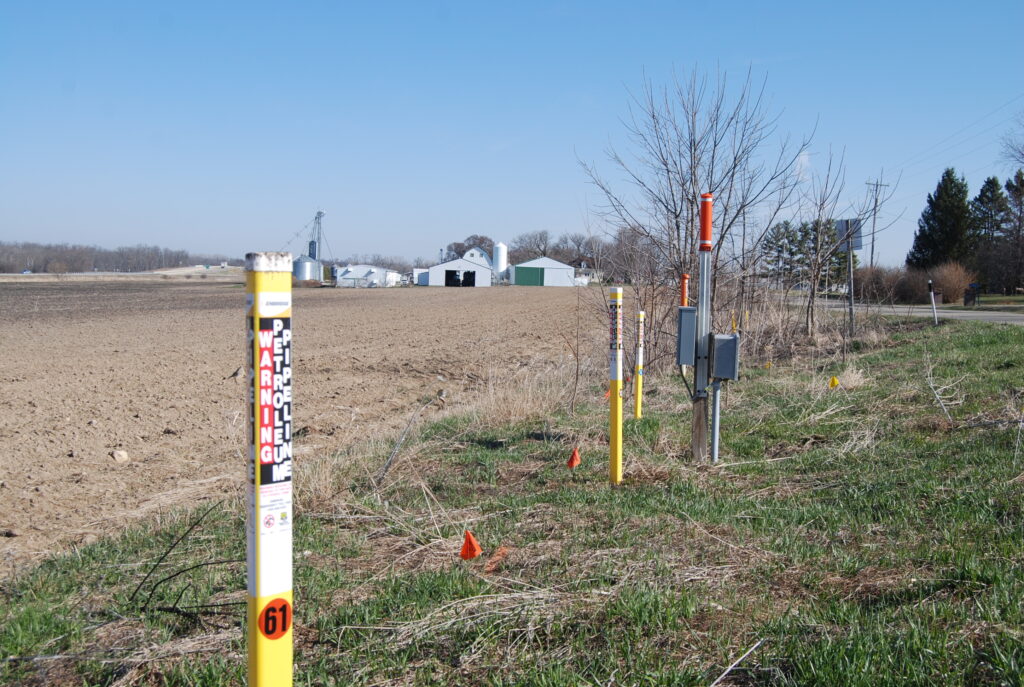
Several markers show placement of pipelines along Blackhawk Island Road.
This post has already been read 3895 times!
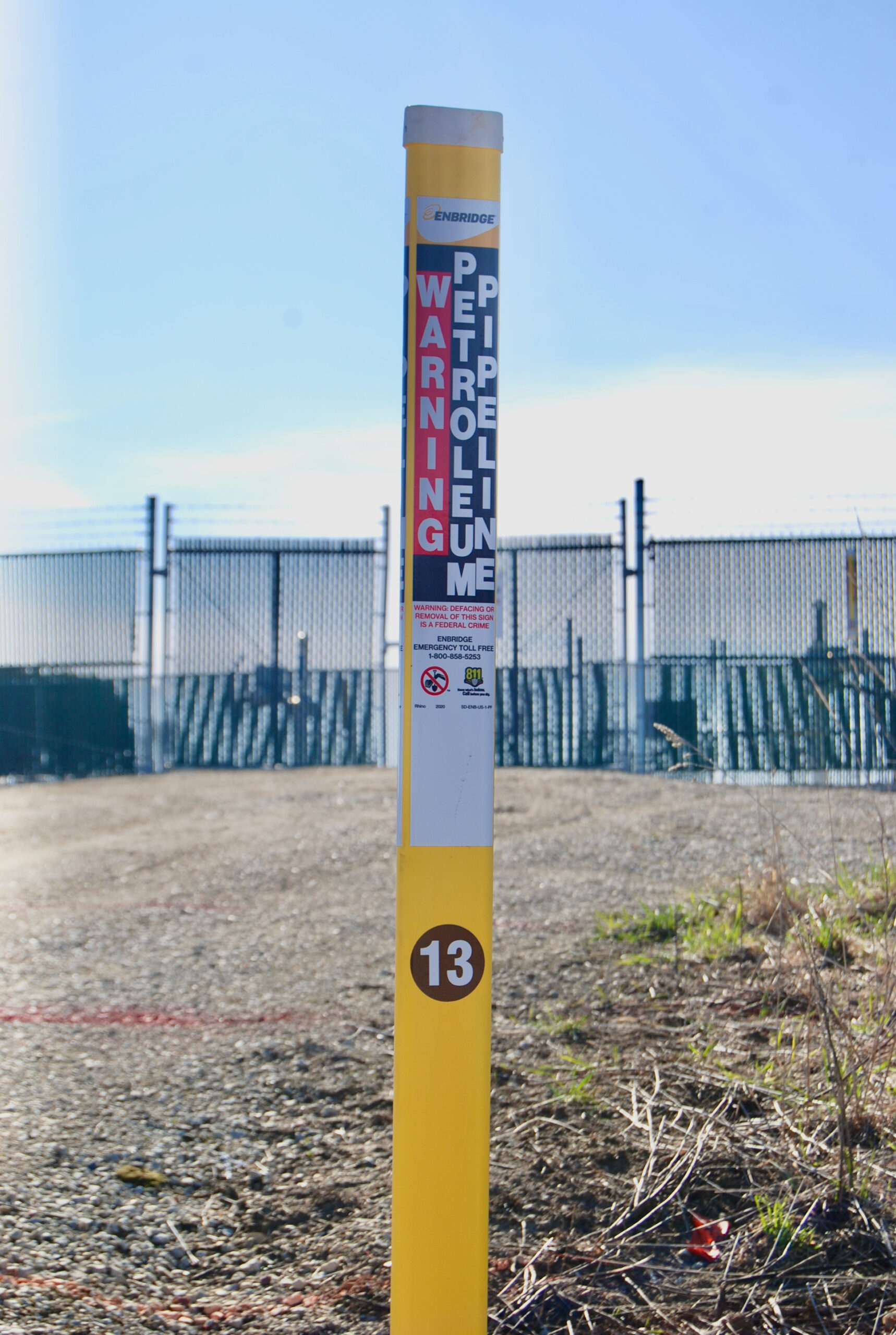
Thank you Fort Atkinson Online and Kim McDarison for covering this important issue. Please note: I am interested in environmental issues, and there is a pipeline in our community of Lake Mills (the township.) I serve as County Supervisor for District 13 (in the City of Lake Mills).
Enbridge petroleum product pipelines also run through our Jefferson County communities of Oakland and Waterloo.